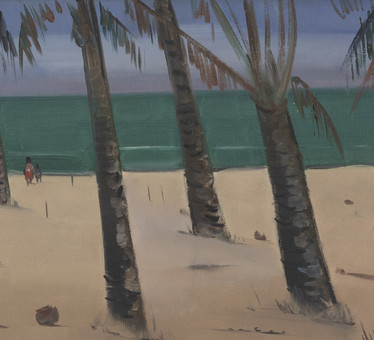José Pancetti

Campinas, Brazil, 1902 —
Rio de Janeiro, Brazil, 1958
Man of the sea, José Pancetti immobilized oceanic magnitudes in the possible fragment of a human work without removing the nod from the endless. Its navies report the indecipherable prose of the waves in an imagery lyricism that also does not forget the figures that inhabit the continent.
A sailor since his youth, Pancetti learned to be a painter in the exercise of his trade and in the company of Núcleo Bernadelli, where he received the guidance of Bruno Lechowski. A characteristic of his work is the exercise of classic genres invested in the unusual approach that the artist gives them, producing compositions that escape the traditional frameworks, often organized from lateral and oblique angles. In this way, the portraits painted by Pancetti dispense with frontality, giving shape to geometrized figures and synthesized features, such as the Portrait of Lourdes (sd) and the Self-Portrait (1945), in which the painter appears holding a book in which he stands. reads “isms”, a gesture of refusal to artistic fashions. Also peculiar are their still lifes, which, like Still Life with Flowers, Fruits and Portraits (1941), combine prosaic fruit arrangements with portraits, in an innovative metalinguistic exercise.
However, what makes Pancetti remarkable is the painting of seascapes. There are scenes in which the cloudy sky is reflected in the sea in melancholic silver, as in anchored boats (1938) and Marinha (1946), works colored by a feeling of loneliness. In the luminous seascapes of Bahia’s beaches, the vividness of color transforms the isolation of the figures into calm contemplative solitude. Farol da Barra (1954) shows a blue and purified sea, bordered by a strip of golden sand, while the Landscape of Itapuã (1953) inserts small human figures in front of a dark sea, whose waves break on the large rocks that precede the coastline .
In this way, the sea that Pancetti presents us is a silent kingdom, in which all the elements, even the boats, seem to refer to a time without memory, placed before this deep and infinite ocean. In its seascapes, nature is reborn with modulations of light that cause melancholy or peace to spring from the depths of beings. Human figures, both painted and spectators of the paintings, indulge in the enchanting spark of the sublime.
VRP
